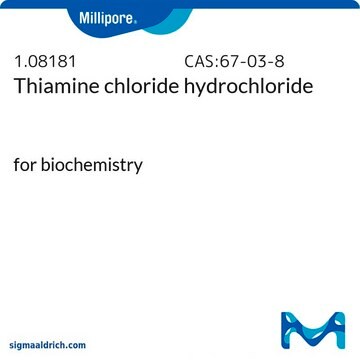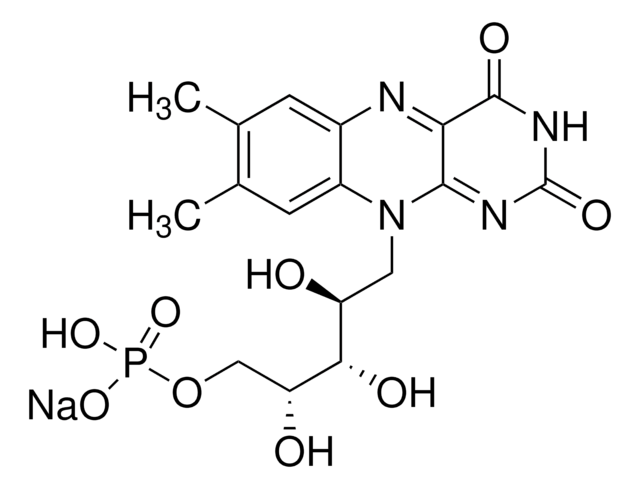Y0000467
Tiamina hydrochloride
European Pharmacopoeia (EP) Reference Standard
Sinónimos:
Aneurina hydrochloride, Vitamina B1 hydrochloride
About This Item
Productos recomendados
grade
pharmaceutical primary standard
API family
thiamine
manufacturer/tradename
EDQM
mp
250 °C (dec.) (lit.)
application(s)
pharmaceutical (small molecule)
format
neat
storage temp.
2-8°C
SMILES string
CC1=NC(N)=C(C[N+]2=CSC(CCO)=C2C)C=N1.Cl.[Cl-]
InChI
1S/C12H17N4OS.2ClH/c1-8-11(3-4-17)18-7-16(8)6-10-5-14-9(2)15-12(10)13;;/h5,7,17H,3-4,6H2,1-2H3,(H2,13,14,15);2*1H/q+1;;/p-1
InChI key
DPJRMOMPQZCRJU-UHFFFAOYSA-M
¿Está buscando productos similares? Visita Guía de comparación de productos
General description
Thiamine hydrochloride is a water soluble vitamin, which belongs to the B-complex group of vitamins. It can exist both as a hemihydrate and as a nonstoichiometric hydrate. It can generally act like a co-enzyme for biochemical reactions involved in carbohydrate metabolism.
Application
Packaging
Other Notes
signalword
Warning
hcodes
Hazard Classifications
Eye Irrit. 2
Storage Class
11 - Combustible Solids
wgk_germany
WGK 1
flash_point_f
Not applicable
flash_point_c
Not applicable
Elija entre una de las versiones más recientes:
Certificados de análisis (COA)
It looks like we've run into a problem, but you can still download Certificates of Analysis from our Documentos section.
Si necesita más asistencia, póngase en contacto con Atención al cliente
¿Ya tiene este producto?
Encuentre la documentación para los productos que ha comprado recientemente en la Biblioteca de documentos.
Los clientes también vieron
Nuestro equipo de científicos tiene experiencia en todas las áreas de investigación: Ciencias de la vida, Ciencia de los materiales, Síntesis química, Cromatografía, Analítica y muchas otras.
Póngase en contacto con el Servicio técnico






